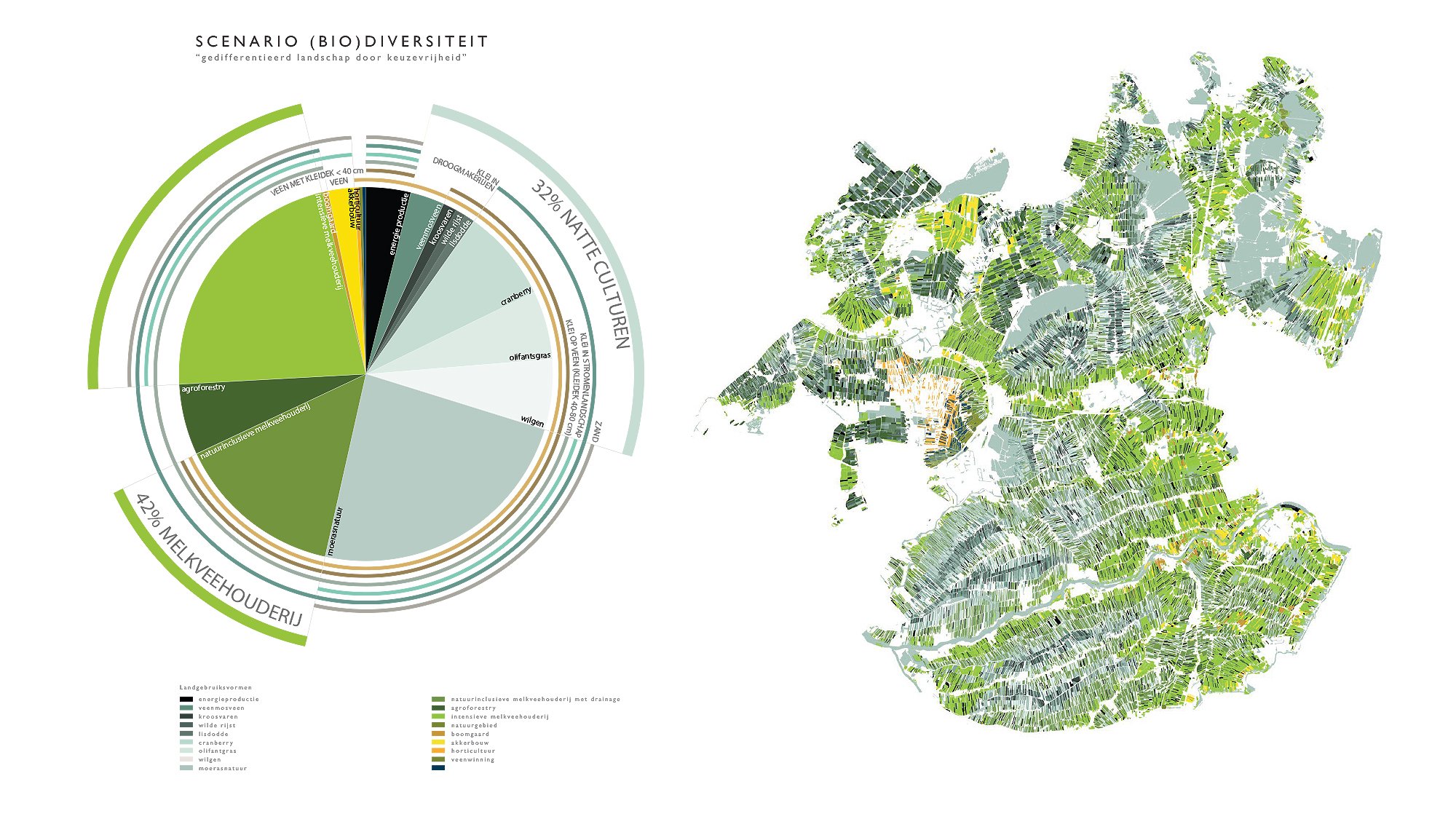What if…? Explorations for a nature inclusive future
The Netherlands is actively engaged in crafting a sustainable and resilient landscape for the future. FABRICations is a key player in this effort, exploring a nature-inclusive approach to global challenges such as climate adaptation, the food transition, and nature restoration. FABRICations Partner Rens Wijnakker sheds light on the ongoing efforts of the team, with a particular focus on the explorations done for the national government. These not only explore current problems but also give us exciting ideas for the future.
Combining agriculture production with technology innovation and energy production on peat landscape
Exploring the future of the Dutch landscape
“We've been thinking about the Netherlands might look in the future, especially in rural areas. Our projects in this field involve careful and detailed studies, influencing national spatial policies. Our food system faces tremendous changes due climate change and a need for a more healthy and sustainable diet, and spatial choices have to be made. We share what we learn with government leaders, and they make decisions based on that. Thinking about what farming, food and nature will be like in the near and far-off years, especially with the goal to stop carbon emissions by 2050. That means, for instance, there should be much less livestock.”
Rens emphasizes the importance of the ability to keep producing food and materials on the long run. “We have a lot of dairy products because the Netherlands is wet, making grass the only crop we can grow in many areas. Right now, we have more livestock in the Netherlands than our land can handle. To sustain this system, we import soy from Brazil and phosphate from Morocco. This pollutes our environment. We need to think about alternatives: on the one hand a more natural landscape with circular livestock farming, on the other hand a strong focus on new and innovative ways to grow crops in areas that deal with climate changes such as increasing water dynamics. With circular livestock farming I mean that the animals are fed with food leftovers or feed fertilized with their dung. This not only creates an appealing landscape for people and other forms of life but also contributes to emission reduction, all while sustaining a healthy and diverse diet.”
Understanding the water systems and their resilience in the context of the Groene Hart
“Our projects involve careful and detailed studies to influence national spatial policies”
“The only way to stay within our planetary boundaries is by a transition in our diet. A diet where we eat less meat and dairy products, and more plant-based products. This has an impact on the crops we cultivate: less livestock means less need for grass and maize, and more need for protein and oil rich crops like peas and beans. That changes agriculture. We're analysing how these changes impact the land and if it's a good place for people and animals.”
Around a 100 years ago, you could easily see where our landscape is wet or dry and where the soil is very rich or poor of nutrients. This will be restored: water and soil will become again leading factors in future land use, which makes the landscape more legible. This doesn't mean we'll be farming less in the Netherlands, Rens explains: “Technological advancements continue. Think of precision farming, where satellites can precisely measure where specific nutrients are needed, where diseases are present, or where water is required. This allows even small-scale agriculture to be highly efficient.”
One of the maps made in the context of the NOVI project outlining a potential future for the country
Future-oriented agriculture
"One aspect we consistently advocate is the transformation of agriculture, and not just its extensification. We don’t need to go back in time. In places like Food Valley, where there are lots of farms, something has to be done right now. Deliberations about buying out these farms are ongoing. While the focus here is often on the extensification of livestock farms, in order to reduce emissions and restore nature, we propose considering future-oriented agriculture. This area is originally an agricultural area and is well connected for bringing in and taking out food and products, in addition to an impeccable water supply. There is a lot of valuable soil for food production, which we should cherish. It would be a waste to throw away all these good things. We're carefully thinking about how these areas could transform and what could replace the current insustainable system, exploring alternative prospects for those who live and work there.”
Which prospects are imaginable? The current challenges encompass nitrogen issues, CO2 emissions, increasing salinity in groundwater and localized dryness. These challenges manifest in different locations and at different times, resulting in a compounding effect. This underscores the importance of adopting a long-term perspective rather than solely addressing immediate concerns. An integral view and a perspective-driven approach are necessary, considering not only what is lost but also what replaces it, argues Rens: “We believe every inch of land in the Netherlands is useful. Even if utilized extensively, it holds significant value for our economy, food system, energy system, water system, and beyond.”




